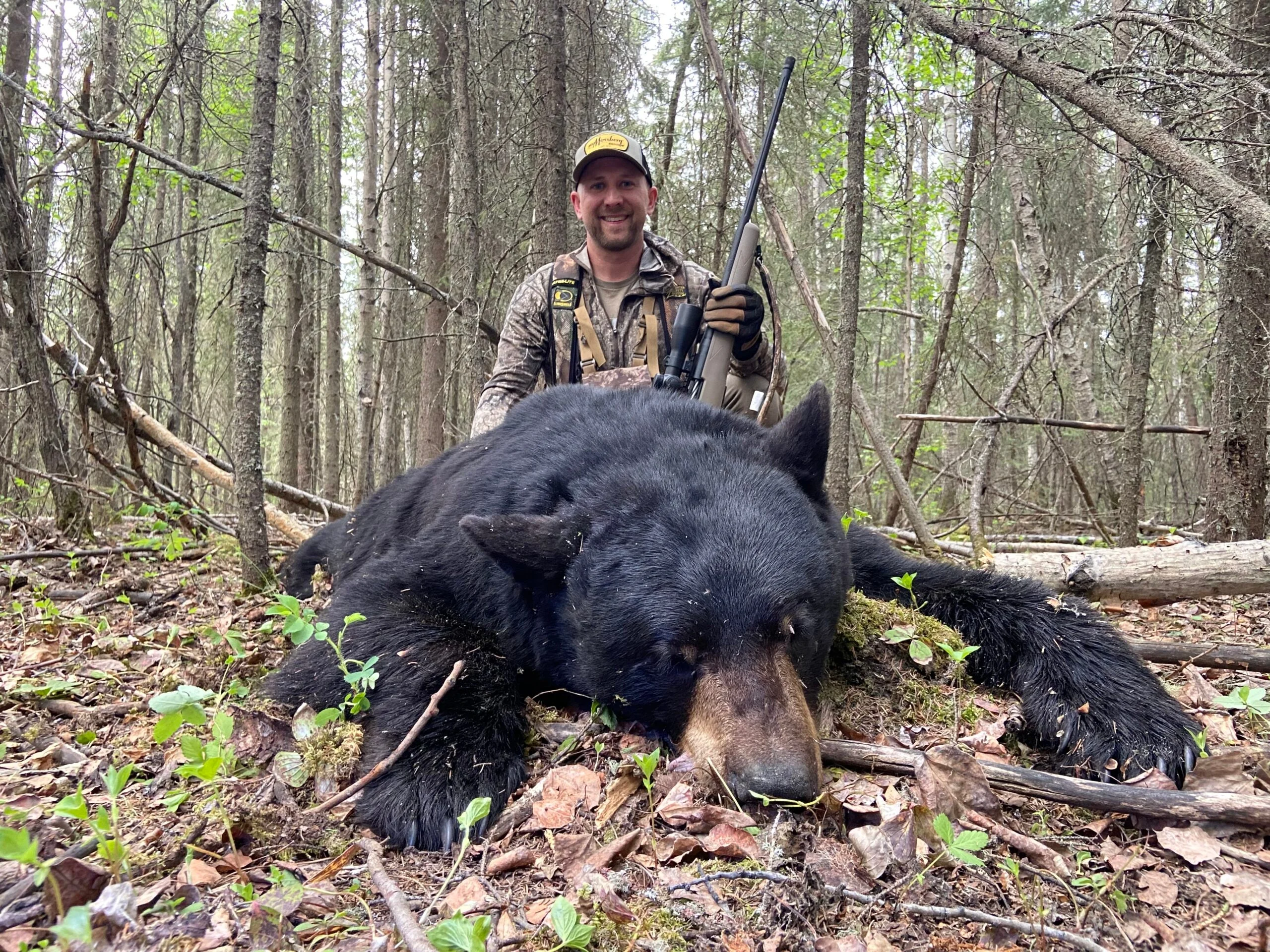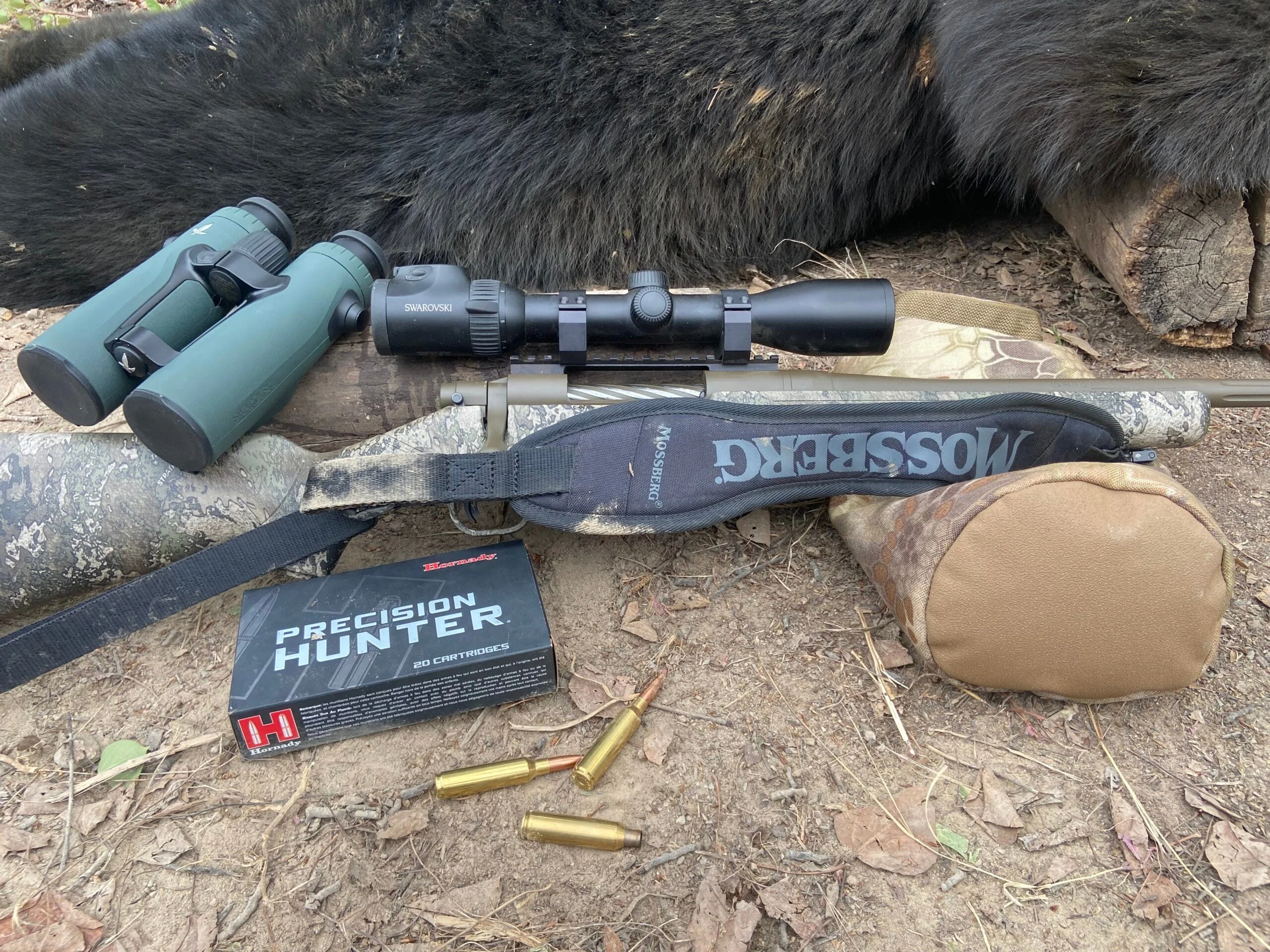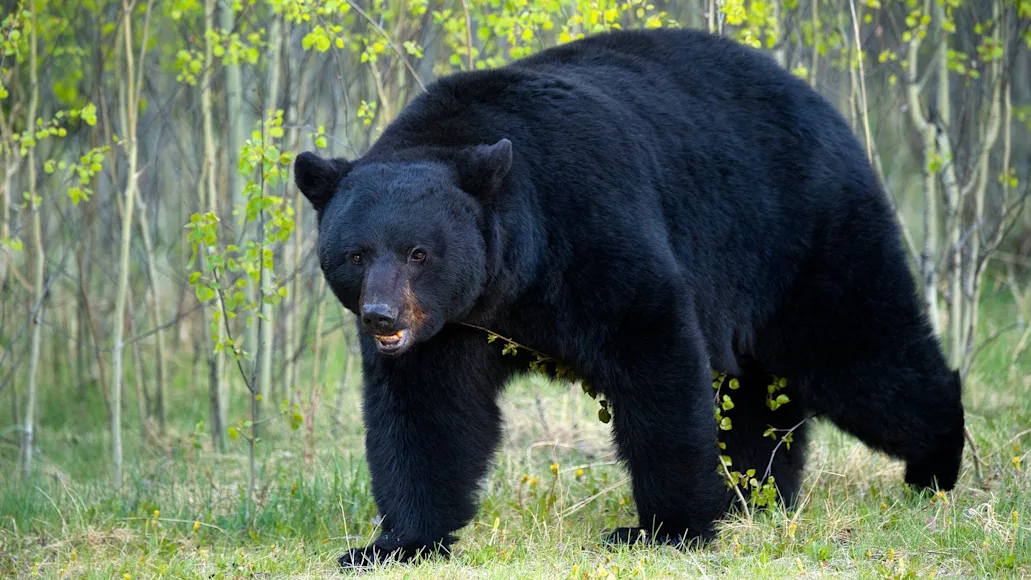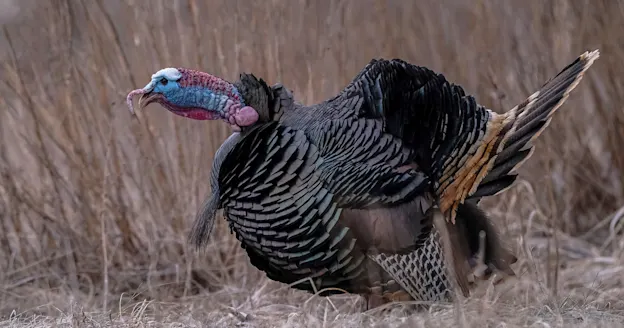_We may earn revenue from the products available on this page and participate in affiliate programs. Learn more ›
_
I THOUGHT it would be a thrill to have a black bear climb into my tree stand with me, as they sometimes do on baited hunts. Then I watched a sow walk under the 15-foot-high wooden platform where I was sitting and look up. She clearly spotted me, but instead of scampering away, she stood on her hind legs, dug her front claws into the bark of my stand tree, and scaled 7 feet up almost instantly.
You’d think an animal as heavy as a black bear, even a smallish one, would shinny and fumble a bit while climbing a slick tree trunk, but the sow simply put one paw in front of the other and pulled herself up with no apparent effort at all. In the time it took for me to stand up and take a step back, she was level with my feet and close enough to slap on the nose. Not that I planned on slapping her on the nose.
“Git!” I yelled. But she only twisted her head slightly, as if to get a better look at me, and then climbed a little higher. Turns out, the novelty of having a bear that close is pretty fleeting, and I quickly reached for my rifle.
Bear Problem
On our drive to W&L Guide Service
in northern Alberta, Linda Powell told me the story of a hunter from a few years ago who sat back while a bear climbed the ladder of his stand. The bruin stopped at the guy’s feet, eyed his boot laces for a bit, and then began gnawing on them. At that point, the hunter shot the bear out of the tree, filling the second of his two tags.
Powell, who works for Mossberg and who invited me on the trip, has been coming to Wally Mack’s spring bear camp for years. Mack and his wife, Louisa, have been running the camp and guide service for three decades. Their sons, Shawn and Kristen, help them with the day-to-day guiding, and Wally says they’ll take over completely in a few years.
In Wally’s bear camp, running out of tags is a common problem. The area is crawling with bears, and the guides keep some 40 bait-and-stand sites running all spring, from May to mid-June. Most sites get a generous helping of fresh bait—oats soaked in fryer grease, marshmallows, Gummy worms, cake icing—every two or three days. Hunters get two bear tags, and during a five-day hunt, most get the chance to hang them both on big bears.
Tagged Out
My first opportunity came quickly, about a half-hour into the first evening. A goliath bruin lumbered in from the bush and stood over the bait barrel 15 yards from me. I’d hunted bears a bit and knew the basic cues for judging a bear’s size, but I’d never hunted the animals over bait and had never been so close to one. So I watched him for a bit.
The bear seemed to check all the boxes of being a mature boar. He was taller at the shoulders than the 55-gallon drum full of bait, and you certainly couldn’t stuff him inside that barrel—Wally’s number-one tip for field-judging bears. “If it seems like a bear could fit inside the bait barrel, it’s too small,” he told us before the hunt.
But even without the barrel for reference, this bear looked big. His head was round, with a deep dimple between the eyes. I knew for sure he was a shooter when he stood and bit into the beaver carcass that was suspended from a log, 7 feet up in the air.
The Macks purchase skinned beaver carcasses from local trappers. Kristen, my guide for the week, said that a good day of bear hunting starts with a fresh beaver. The rancid ones that have been riding in the bait refill bucket for a while attract bears just as well, but handling them is no fun at all. The guides chop the beaver carcasses in half with an ax and then take a half portion in with them when they drop hunters off in the stand, securing it by rope while the hunter gets settled.
Powell was the one who told me that the dangling beaver carcass is a good reference of a bear’s length. Any bear that can stand on its hind legs and reach it easily is over 6 feet long, and one you should consider shooting. When that first bear I saw stood and simply bit into the dangling beaver, audibly crushing bone and causing a gob of entrails to slither out onto his face and then sag to the ground with a plop, I knew for sure he was big. I shouldered my rifle and killed him right there. He measured 7 feet 9 inches—an immense black bear anywhere they’re found.

The first of the author’s two 7-plus-foot bruins. Will Brantley
My second bear walked in two evenings later, and even from 100 yards out, I knew he was big. A small bear was already on the bait, and it bolted as the big boar approached, swaggering left and right, a full half-shoulder taller than the bait barrel. I’d been calm with the first bear, and the decision to shoot was almost clinical. With this one, I had to calm my breathing and force myself to hold the crosshairs tight on his vitals. But the shot was good. The bear lurched into the brush and was dead within 20 yards. I texted Kristen, told him I was tagged out, and began gathering my stuff to climb down and have a look my trophy.
Close Encounter
I was halfway down the ladder when I looked over my shoulder and saw that the smaller bear was back on the bait. So I climbed back up to wait, and that’s when I noticed the sow approaching, walking along the same path that the big boar had used. She’d obviously seen me moving and was now closing in fast to the base of my stand.
Kristen had told me that moving around when bears are close can actually attract them, and even trigger a territorial response. “Bears climb trees when they’re afraid,” he said, “and when they see you up there, they think you’re another bear that’s afraid of them. The ones with an attitude will climb the tree to mess with you.”
I wasn’t really afraid of the sow attacking me; I did, after all, have a high-powered rifle leveled at her face. But I was out of bear tags and couldn’t legally shoot, except in self-defense. I wasn’t entirely sure where that defensive threshold was, and I didn’t care to explain the situation to a wildlife officer after the fact.
I hit record on the camera of my phone and held it in one hand—my rifle in the other—to document events just in case. I jabbed at the bear’s face with the muzzle and yelled for it to “Get down!” But even being poked with my rifle barrel didn’t seem to bother the sow much, and my thoughts turned to the live cartridge in the chamber, and my thumb resting against the safety. Was I going to have to shoot this bear?
I shouted louder and more urgently. The sow looked around as if she were bored and then, finally, shuffled back down the tree. She rushed at the smaller bear that was on the bait, slapped the drum full of oiled oats in an attempt to knock it over, and began eating, which is when I heard the sound of Kristen’s 4-wheeler approaching.
“I’ve got a big one down right over there in the bush, and I had a smaller one try to eat me,” I said. We wrestled my boar, another trophy at 7 feet 5 inches, onto the rack of Kristen’s 4-wheeler. Then I showed him the video of the sow on my phone. He chuckled and said, “Yep, that one was close, eh?”
In the end, having not been eaten, I’d say it was kind of a thrill having a bear climb into the stand with me—just not as much of a thrill as hearing Kristen’s 4-wheeler coming in to pick me up.
Gear Profile: My Bear Gun

Loaded for bear. Will Brantley
For this hunt, I was shooting Mossberg’s Patriot Predator
rifle chambered in 7mm PRC. One of the best gear advancements to happen in my lifetime is the budget bolt-action hunting rifle that shoots sub-MOA and functions flawlessly, and that describes the Patriot series (and all the Mossberg bolt guns that I’ve used) to a T. The Predator model has a Picatinny optic rail, a fluted barrel that’s threaded and suppressor-ready, box magazine, and an adjustable trigger—all for less than $600 MSRP and well under $500 street price.
It might seem strange to top a rifle of that price with a Swarovski Z8i 1.7-13.3×42 scope
, which retails for more than $4,000. You could certainly get by with spending a lot less on a scope for a baited bear hunt, but this was the first chance I’ve had to use Swarovski glass in the field. To merely say I was impressed would seem rude; it’s incredible, particularly in low light. I used a pair of their NL Pure 8×42 binoculars as well, which I also carried for most of turkey season. Many western big-game guides who truly depend on their glass to make a living swear by Swarovski optics, and I’m glad to say I at least got to try them for myself and see what all the—justified—fuss is about.
As for the 7mm Precision Rifle Cartridge, well, it’s more than enough for big black bears. This is a cartridge that is, of course, designed to deliver flat trajectory and magnum performance at long range, but there’s nothing wrong with its performance within bow range, either. I was loaded with Hornady’s 175-grain ELD-X Precision Hunter
, which is one of the best all-around hunting bullets out there, regardless of the chambering. Both my bears were shot once and dead within sight. Bullets passed through and did their job quickly, which is what I’ve come to expect from an ELD-X at any distance.
_Read more F&S+
stories._






